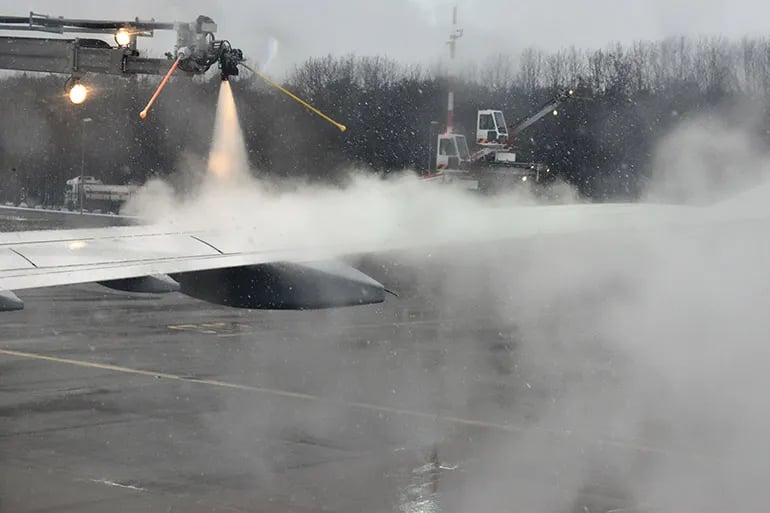The Challenge of Winter De-icing
De-icing operations are crucial for ensuring safety and functionality in various industries during winter months. The challenges presented by ice accumulation are particularly acute in transportation sectors such as aviation and road transport. Effective de-icing is not merely a matter of convenience but a critical safety requirement.
The primary challenge in winter de-icing lies in the harsh environmental conditions in which these operations must be conducted. Extremely low temperatures can dramatically affect the performance and durability of de-icing systems. The equipment is often exposed to a mix of ice, snow, and de-icing chemicals, which can be highly corrosive. These factors demand materials that can withstand such aggressive conditions without degradation over time.
The demanding nature of these environments requires de-icing equipment to be effective in ice removal and also resilient against wear and corrosion. This is where the selection of appropriate materials for components like rotors and vanes becomes crucial. The material must endure repetitive exposure to extreme cold and corrosive agents while maintaining operational integrity. Any failure in these components can lead to inefficiencies in de-icing and, more critically, safety risks.
The Effectiveness of Carbon Graphite Anti Icing Systems
Carbon graphite has emerged as a key material in the design and manufacture of de-icing units due to its unique properties. Carbon graphite is used in the construction of rotors and vanes, which are essential components of de-icing units. The selection of carbon graphite for these parts is driven by its ability to offer durability and efficiency, especially under the demanding conditions of winter weather.
Carbon graphite is a composite material known for its strength, thermal stability, and resistance to chemical corrosion. Its inherent properties make it well-suited for use in environments that are subject to extreme temperature variations and exposure to corrosive substances, such as de-icing chemicals. Additionally, carbon graphite is lightweight yet strong, a combination that ensures the de-icing units are not overly burdened by the weight of their components, thereby enhancing overall operational efficiency.
Why Choose Carbon Graphite Materials for De-icing Units?
- Resistance to Corrosion and Wear: Carbon graphite's chemical inertness makes it resistant to the corrosive effects of various de-icing agents. This property extends the lifespan of rotors and vanes, reducing the need for frequent replacements and maintenance.
- Endurance in Extreme Temperatures: The material's stability in extreme cold ensures that it does not become brittle or lose effectiveness, a common issue with some metals and plastics at low temperatures.
- Lightweight and High Strength: The lightweight nature of carbon graphite contributes to the overall efficiency of de-icing units by reducing the load on the system. This property, combined with its strength, allows for the design of more efficient and agile de-icing systems.
- Energy Efficiency: Carbon graphite's properties can lead to reduced energy consumption in de-icing units. Its efficiency in transferring mechanical energy, due to its low friction and wear characteristics, means that less energy is required to achieve the same level of de-icing effectiveness.

Future of De-icing Technology and Carbon Graphite's Role
The future of de-icing technology points towards an increasing reliance on carbon graphite, driven by advancements in material science and evolving de-icing techniques. Continuous improvements in carbon graphite, aimed at increasing its durability and mechanical strength, promise to extend the lifespan of de-icing components and reduce maintenance needs.
Carbon graphite is expected to be a crucial component in emerging de-icing technologies, including more sophisticated mechanical and chemical systems, as well as novel methods currently under development.
Beyond traditional sectors, carbon graphite's unique properties may lead to its use in new areas of winter maintenance, broadening its impact across various industries.
Carbon Graphite's Pivotal Role in Advancing De-icing Technology
Carbon graphite's role in de-icing units is very important. This article has discussed the material's unique properties including its durability, resistance to extreme temperatures, and efficiency. These qualities make it ideally suited for the rigorous demands of de-icing operations in various sectors, including aviation, road transport, and public infrastructure.
Looking ahead, the future of de-icing technology seems linked with advancements in carbon graphite applications. As we continue to see innovations in material science and de-icing techniques, carbon graphite is poised to play an even more significant role. Its adaptability and proven track record in existing applications set the stage for its expanded use in new and advanced de-icing systems.



